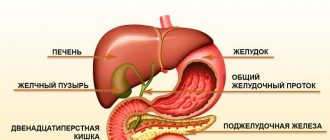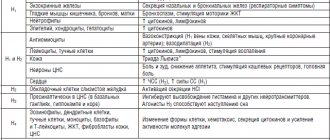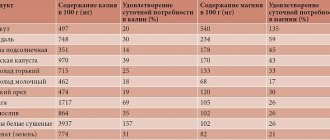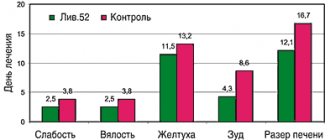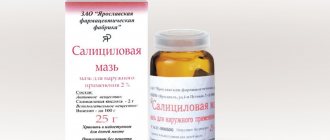D. R. Musharapova
4th year student, Faculty of Dentistry, State Educational Institution of Higher Professional Education "Kazan State Medical University" of Roszdrav
L. R. Mukhamedzhanova
Doctor of Medicine, Associate Professor, Head of the Department of Therapeutic Dentistry, Kazan State Medical University, Roszdrav
The modern domestic and foreign pharmaceutical market offers a growing range of drugs used to treat periodontal diseases and oral mucosa, which is growing every day. Preparations for local pharmacotherapy of these diseases are represented by a variety of gels, ointments, collagen and adhesive compositions. Many of them are designed specifically for application to periodontal tissues, characterized by complex topographical and anatomical features, rich blood supply and innervation. During local treatment, medicinal substances introduced into periodontal pockets are quickly washed out of them, which reduces the therapeutic effect of the drugs. In addition, after surgical interventions, such as curettage of periodontal pockets, the wound surface is practically not protected from injury from eating and infection by the contents of the oral cavity. These disadvantages can be avoided by using periodontal dressings.
Periodontal dressings-applicates fixed in various ways on periodontal tissue Therapeutic periodontal dressings serve to prolong the effect of drugs in periodontal pockets during drug treatment and after surgical interventions, accelerating the regeneration of epithelial and connective tissue structures. The purpose of our research is to develop requirements for periodontal dressings, clarify the classification of periodontal dressings, and develop criteria for the effectiveness of periodontal dressings. RESEARCH METHODS: review of the literature on this issue, study of proposals from the domestic and foreign pharmaceutical market. During the study, we conducted a comparative assessment of the effectiveness of using various groups of periodontal dressings and proposed our own classification.
Requirements for periodontal dressings:
- must be resistant to the humid environment of the oral cavity;
- the textile material of the periodontal dressing must be compatible with the drug;
- have acceptable organoleptic properties (appearance, color, smell).
Classification of dressings
Dressings are classified according to several parameters. According to the purpose of use, the following types of medical dressings are distinguished:
- holding;
- pressing;
- immobilizing;
- occlusive - to seal the wound from exposure to water and air;
- aseptic;
- medicinal - for supplying medicinal substances to the damaged surface;
- corrective - to correct deformities.
Types of dressings vary depending on the material used:
- soft;
- hardening (gypsum and starch);
- hard (tires).
CHARACTERISTICS OF GROUPS OF BANDAGES
An analysis of the pharmaceutical market offers led to the conclusion that the classification of periodontal dressings is somewhat behind the times, and we propose our own classification (groups 1, 2, 3, 6 are described in many textbooks on periodontology and are widely used, and 4- I and the 5th group are included by us and belong to the more modern ones).
Classification of periodontal dressings (L. R. Mukhamedzhanova, D. R. Musharapova, 2010)
1. Soft periodontal dressings. 2. Semi-solid periodontal dressings. 3. Hard periodontal dressings. 4. Adhesive compositions. 5. Collagen films. 6. Dressings made ex tempore.
Soft periodontal dressings
The most commonly used group of periodontal dressings. It is characterized by relative ease of manufacture and low cost, but fixing such periodontal dressings on periodontal tissues is quite difficult. This bandage is applied for no more than 5–7 minutes. For the manufacture of soft periodontal dressings, soft dosage forms are used: water-soluble and fat-soluble ointments, gels, pastes. The most commonly used soft dosage forms are tetracycline ointment 1 and 3%, betadine ointment, methyluracil ointment 10%, heparin, butadione, indomethacin ointments.
Gels: solcoseryl, curiosin, actovegin. Cotton wool, bandage (gauze) or other textile material can be used as a carrier.
There are 2 ways to apply a bandage :
- A soft dosage form is applied to a textile carrier of the required size and distributed evenly over the entire surface with a spatula. Then it is fixed on the alveolar process so that the central part of the periodontal bandage is thrown over the cutting edge of the teeth, and the marginal and alveolar gums are covered. The size of the textile carrier must be calculated in such a way that the periodontal bandage covers the border on the vestibular and oral sides.
- Prepare 2 cavities from a textile carrier measuring 3 x 0.5 cm, apply a soft dosage form to them and attach them to the vestibular and oral surfaces of the alveolar process. With this method, the bandage is held in place by adhesive mechanisms.
Semi-solid periodontal dressings
This group of periodontal dressings is used much less frequently because it requires a certain amount of time. These dressings are well fixed on the alveolar process due to the hardening effect, however, the range of dosage forms used for these purposes is very limited: only ointments made on a fatty (lanolin, petroleum jelly) basis. Manufacturing method: on a plateau, mix dentin paste and ointment in equal quantities to the consistency of thick sour cream. Then this mass is quickly transferred to a pre-prepared textile carrier of the required size and fixed on the alveolar process. The patient is asked to close his jaws and sit for 3–7 minutes. During this time, the bandage hardens.
This bandage stays in the mouth for 3–7 hours, then begins to crumble. The appearance of crumbs is a signal to remove the bandage.
Solid periodontal dressings
Solid periodontal dressings are divided into 2 groups: 1. Ready-made periodontal dressings (septopack). 2. Hard 2-layer dressings made using dental impression materials (repin, dentol).
Method for making a septopack : when working with these preparations, use only a dry and sterile spatula; A small amount of paste taken with this tool should be given a conical or spherical shape, depending on the subsequent use. At the same time, moisture should not come into contact with the preparation. It remains plastic in the oral cavity only for 2–3 minutes after application to the treated area, and hardens within half an hour. Exposure time - up to a day.
Adhesive compositions
One of the promising groups of periodontal dressings. Adhesive compositions include adhesive dressing KL-3, which is an adhesive composition based on polyurethane, is a non-toxic, biologically compatible preparation, and is autosterile. When applied to the gum mucosa, it polymerizes to form a porous, highly plastic film.
Collagen films
Collagen films are self-absorbable adhesive films impregnated with various medicinal substances, for example, Diplen-Denta M with metronidazole, Diplen-Denta L with lincomycin, Diplen-Denta HD with chlorhexidine and dexamethasone, Diplen-Denta LH with lidocaine and chlorhexidine. The film is transparent, adheres well to the moist surface of the oral mucosa and does not cause discomfort in patients. It can be used as a periodontal dressing after interventions on periodontal tissues, as well as as an independent means of pathogenetic therapy. The duration of treatment varies from 7 to 20 days depending on the severity of the disease with daily applications 1 or 2 times a day. "Diplen-Denta LH" is used for surface anesthesia before the removal of supra- and subgingival dental plaque and curettage of periodontal pockets, as well as in the treatment of lesions of oral tissue with severe pain symptoms (wounds, aphthae, ulcers, bedsores from dentures, etc.) .
Method for making a bandage: the film removed from the package is cut into strips 5 cm long and about 1 cm wide and applied with the adhesive (bottom) side to the gum in the area of all teeth. The remaining film dissolves in the oral cavity and is not necessary to remove.
Ex tempore dressings
The “creative group” of periodontal dressings allows us to take into account the individual characteristics of the disease. There are various prescriptions for periodontal dressings - here is one example:
- ZnO 40.0
- Rosin 45.0
- Tannin 10.0
- Zinc acetate 4.7
- White clay 2.5
- Sulfanilamide 2.0
- Asbestos fibers 1.0
- Ascorbic acid 0.1
- Vitamin P 0.1
The basis of most therapeutic dressings is zinc oxide, dentin, and white clay. The liquid ingredients in different recipes are different: clove, corn, sea buckthorn oil, rosehip oil, oil solutions of vitamins A, E. Substances with different mechanisms of action are introduced into medicinal dressings: vitamins A, E, C, P, group B, enzymes, glucocorticosteroids, preparations of pyrimidine bases, extracts and extracts of medicinal herbs, propolis, sulfa drugs, antibiotics and other biologically active drugs. Under their influence, the contamination of periodontal pockets with microorganisms is reduced, and a pronounced anti-inflammatory, antimicrobial, hyposensitizing, keratoplasty, analgesic and regeneration-stimulating effect is manifested.
Basic rules for applying bandages
The ability to apply a simple bandage can be useful to everyone, so you should know the basic rules and techniques used when applying different types of bandages:
- do not touch the wound with your hands;
- use sterile dressing material;
- carry out the dressing facing the victim in order to understand whether the manipulation does not cause unnecessary pain;
- bandage from bottom to top and from the periphery to the center;
- roll out the bandage without removing it from the body;
- bandage the limb in a position comfortable for the victim: legs straight, arms slightly bent.
In this case, the bandage should be moderately tight so that it does not interfere with normal blood circulation and does not move out.
Overlay algorithm step by step
- Clean and dry the area around the wound as much as possible before applying the dressing to your chest.
- cover the wound with damp, sterile gauze to stop bleeding;
- then cover the gauze and wound with an occlusive dressing and gently press it along the edges to create a strong seal;
- For chest trauma, wait until the patient has exhaled or ask him to cough before applying the dressing. This will reduce the amount of air trapped inside the chest.
You should note that applying an occlusive dressing in the field requires preparation. It is best if you attend specialized courses or master classes and practice the technique on a training mannequin or partner.
Application techniques depending on the type of dressing used and the place of its application
The technique of applying bandages for different parts of the body is different and depends on what type of medical bandage is used.
For head injuries
What bandage is used to provide first aid for a head injury? There are several varieties:
- the frenulum is applied to the parietal and occipital parts;
- the cap and cap of Hippocrates cover the entire scalp;
- a figure-of-eight monocular or binocular bandage is used for eye injuries;
- A sling bandage is used for injuries to the facial part of the head.
For limb injuries
When applying bandages to limbs, it is especially important to adhere to the rule of bandaging in the direction from bottom to top. This technique will prevent the accumulation of venous blood in the unligated parts of the limb.
A reliable spica bandage is used to bandage the shoulder and hip joints. A figure-eight bandage is applied to the elbow and knee joints. The lower leg, shoulder, forearm and thigh are bandaged in a spiral or spicate manner.
Which bandage is used depends on the degree of load.
Pressure bandage and tourniquet
A pressure bandage is used for minor bleeding of a capillary or venous nature, as well as for violation of the integrity of small arteries. It can be left on the body until the victim is admitted to a medical facility.
A tourniquet is used for bleeding from large arteries. It should not remain on the body for more than 1 hour in the cold season and more than 2 hours in the warm months.
Immobilization splint
When applying an immobilizing splint bandage to the limbs, you should adhere to the basic rule - grab the joints above and below the injury site, except in cases of hip and shoulder fractures, when the entire limb is fixed at three points.
In areas of bony protrusions, the splint is lined with soft material to prevent the formation of bedsores and abrasions.
Any damage to the skin, be it a postoperative wound or an ordinary cut, must be protected from the penetration of pathogenic bacteria. Today, standard bandages and gauze cuts have been replaced by modern bandages-plasters. They not only conveniently attach to the skin, but also effectively protect the wound from infections, promoting its speedy healing.
Among adhesive-type dressings, there are 2 main types:
- bactericidal,
- adsorbent.
With the help of adhesive bandages, post-burn and post-operative wounds, trophic ulcers and bedsores, and other skin lesions that require healing are quickly and easily regenerated. The composition of the wound plaster is quite simple: in the middle of the base made of non-woven fabric with an adhesive layer there is an absorbent pad. Thanks to innovative “breathable” materials, the epidermis under the bandage is quickly and efficiently regenerated. Changing dressings does not cause any inconvenience - the hypoallergenic base easily separates from the skin without leaving marks or sticking to the wound.
At the first stage of healing, when exudate is actively released from the wound, absorbent dressings come to the rescue. For some types of wounds, it is not advisable to change patches frequently. In these cases, superabsorbent dressings are used. The sorption capacity of these dressings is such that the patch can retain a large amount of wound discharge for a long time without harming the affected surface. The gel filler contained in the pad effectively absorbs exudate, preventing its secondary contact with the wound and the possibility of infection.
As healing progresses, when the amount of discharge decreases, the newly formed tissues have a high risk of secondary traumatization. This is why it is important to maintain a moist environment under the bandage during the next stage of healing. Moisture is necessary so that the skin does not dry out, is restored without the formation of rough scars and is protected from external influences. Plaster-type bactericidal dressings based on non-woven material or polyurethane film effectively cope with such tasks.
For postoperative wounds and for injuries that have caused deep damage to the skin, bandages are applied in hospitals or clinics. For small, low-traumatic wounds, bandages-plasters can be easily used at home. To do this, simply remove the product from the individual packaging, remove the protective film from the inside and carefully apply it to the wound, combining it with the absorbent pad.
Maybe you'll like it
Bactericidal patch-type dressings
Patch-type bactericidal dressings on a polyurethane and waterproof base
Adhesive-type dressings with superabsorbent
Wound dressing Vilovond POVI Pad
Compression bandages
They are widely used for diseases of the veins of the lower extremities. When applying such a bandage, it is important to follow the rule of gradually reducing the degree of compression from the foot to the knee. There should be no numbness in your fingers. The patient should feel the effect of a tight-fitting boot.
The self-fixing medium-stretch ones - PÜTTERBINDE® (“Pütterbint”) and the long-stretch Lastodur® straff (“Lastodur tight”) from HARTMANN are very convenient to use. They vary in size and degree of elasticity.
Occlusive dressings
They have unique properties: they accelerate the process of epithelization of wounds, improve tissue granulation even in the case of chronic ulcers, and protect the skin from environmental influences. They have found their use in military field surgery for penetrating lung wounds, as well as in dermatology, where they are used to enhance the effect of medicinal drugs.
If you need help choosing, our specialists will advise you online or by phone and tell you the name of the bandage you are looking for.
Criteria for the effectiveness of periodontal dressings
Related to drug effects
- Anesthesia
- Reduced exudation activity
- Reducing swelling
- Turgor restoration
- Degree of epithelialization
- Degree of recession
Related to the characteristics of fixation on periodontal tissues
- Fixation duration
- Degree of periodontal wound protection
- Comfort level of periodontal dressing
- Effect on facial symmetry
